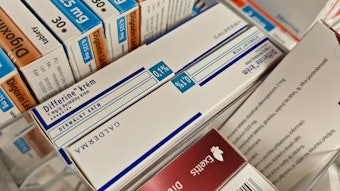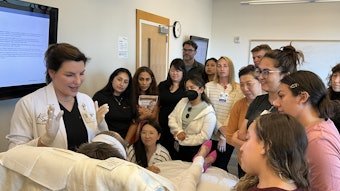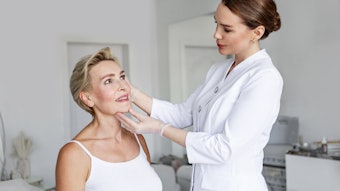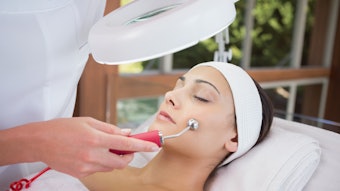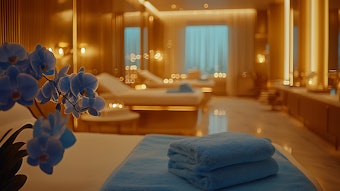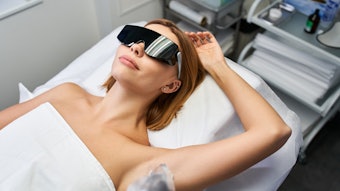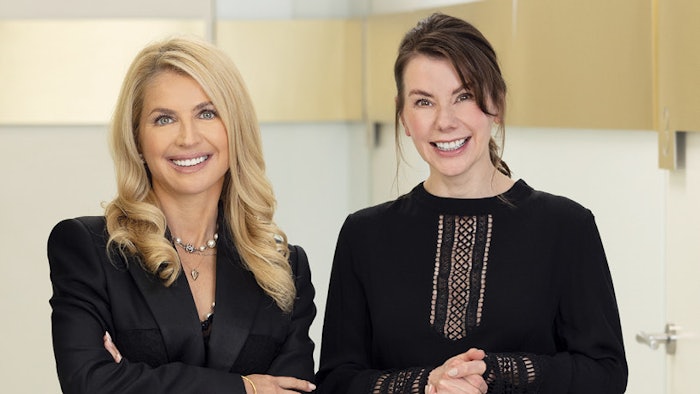
Board-certified dermatologist, Julie Russak, M.D., comes from a long line of physicians. Russak knew from the beginning she would be going into medicine. Growing up in a small town in Siberia, Russak remembers her mother, who specialized in neurology, filling the role of town physician. Despite training to be a specialist, Russak’s mother ended up taking care of her patients as a whole, rather than just treating one aspect of their health. Russak’s own medical journey followed the same path.
Russak explains, “I started as a dermatologist after doing my fellowship in melanoma. As my practice and the demands of my practice grew and the needs of my patients changed, I started doing more and more aesthetic medicine. That’s what ingited my drive to take care of my patient as a whole, not just one particular area of their face. You realize that you cannot really take into account just one area and completely ignore everything else that happens in the whole body. It’s so interesting to look at life and how it comes full circle. Life works in mysterious ways.”
Jennifer Hanway, a board-certified holistic nutritionist, originally hailed from a town just outside London. Initially a professional dancer, Hanway had to reevaluate her career after an injury left her unable to continue on the professional stage. After doing some teaching and choreography, during which she happened to teach Zac Efron how to do the foxtrot, she began instructing fitness classes and working for the first spa company in London. While working for Tracy Anderson’s right hand woman, she decided to ask her what she could do about the problems she had experienced since childhood with her gut health.
Hanway remembers, “I was this dancer fitness instructor that looked super healthy on the outside and really was not healthy on the inside. So, she started working with me and I was one of her clients. She was a holistic nutritionist and biosignature modulation practitioner and she gave me two simple instructions. They were don’t eat dairy and take a probiotic. It changed my health significantly. I was like, A.) from a selfish point of view, I want to know more, but B.) I know I’m not the only person struggling with this. That’s when I went back to school to retrain to become a holistic nutritionist.”
Two Worlds Collide
It was while still living in London that Hanway met her husband, who was from the U.S. and moved here to be with him in September 2013. Her path crossed with Russak’s in 2017 while Hanway was working as a nutritionist for a health retreat in Switzerland. Shortly after they met, Russak asked Hanway to join her practice and help her run a new wellness program. “We have a very similar approach to what we believe is wellness, but also how we work with our patients, so it’s always been a very easy, organic fit for us. I came on board because Dr. Russak was finding that her patients weren’t getting the results that they deserved from their treatments because we weren’t giving them the building blocks from the inside out.” And so, the wellness program was born.
Creating an Anti-Aging & Wellness Program
Russak explains the inspiration behind her decision as a practitioner looking out for her patients to start the anti-aging wellness program.
“As my practice and the overall concept of aesthetic dermatology evolved, we shifted from treating our patients from the outside in, to helping them regenerate from the inside out. We’re really talking about intracellular aging and working toward regenerative aesthetic medicine now, which involves the regeneration of collagen, elastin and overall three dimensional regeneration. Before, we had filler to fill in lines. Now, as an aesthetic practitioner, we are looking into how we can change the methylation of the DNA so you look and feel better. A lot of the procedures we do involve us stimulating our patient’s health to cause regeneration. However, if their body is not in an optimal state to be stimulated, the treatment won’t be as effective. At this point, being an aesthetic dermatologist, I cannot with a clear conscience just inject Botox or filler into my patients without really talking to them about what needs to be done for them to really be, feel and look good. That’s where the wellness program comes in.”
With the advances in research and technology over the years, the team realized last year that it was time to update their existing program to reflect the changes over the past five years. “Since we started the program, both of us have grown in our professional practice and as our patients have gotten older, their needs, but also their knowledge and understanding, has changed,” says Hanway.
That growth in knowledge and available technology allowed the team to expand and perfect both the wellness and aesthetic treatment sides of their program to meet the growing needs of their patients.
Russak relates, “As our knowledge and our practice has evolved, we had to really stop and consider how much more we can now offer our patients. That’s why we started to revamp and reorganize the program to take into account the knowledge that is available right now, as well as the demand for changes in the practice. During that period, we had time to consider what we can offer our patients in terms of the best and most advanced tests, the best and most advanced interventions in terms of supplements and support. And that’s where the program evolved.”
The Anti-Aging Wellness Program
Step 1: First Consultation
The program starts with the initial one-hour consultation with Russak and Hanway, reviewing in detail the patient’s background, health history, problems to address and lifestyle.
Health history/background: “We really want to take a deep dive into your health history, to collect all of those pieces of the puzzle of what makes you you, and get to that root cause of whatever it is that you are finding challenging. A lot of our wellness patients are finding that their metabolism doesn’t feel as quick as it used to, their skin doesn’t bounce back as quick or they don’t have as much energy. What we see is this intersection of women in their forties and fifties here at the peak of their career. But then along comes this and they’re tired, stressed and their thyroid might not be functioning, and it is their hormones that are causing this. We want to try and get the reports of that and then create our interventions around that,” explains Hanway.
Lifestyle: Lifestyle is an important part of the conversation. As Hanway states, “Your lifestyle helps me get an idea of how to present the dimensions to you. How busy are you? How much do you cook? Do you travel? Do you have kids? A big part of our program is not only what we can test our patients for, but then what do you do with all that testing, how do you implement it in everyday life? With our program we also offer our patients support in terms of how to bring it into everyday life and actually feel like they’re still living a life and not living in this restricted bubble where yes, they look good, but they don’t feel like they’re living.”
Understanding a patient’s lifestyle serves the dual function of helping point the team towards possible environmental and daily lifestyle factors contributing
to their problems that they need to test for, in addition to how to tailor the final plan they create for the patient to follow.
Hanway states, “We don’t want to test unless that’s going to inform an intervention, and I don’t want to give an intervention if the patients can’t do it. It has to be realistic. I wouldn’t give someone a 12-step skin care routine if they only have time for five minutes in the evening. We have to meet the patients where they’re at for them to be able to create change.”
Step 2: Testing
Using the information gathered from their initial consultation, the team then decides what testing needs to be done. These include blood tests to check for food sensitivities, hair tests to show the composition and amount of minerals as well as to check for heavy metals, in addition to gut health testing, i.e. fecal testing and a stool sample, for some patients.
Step 3: Second Consultation (Reviewing the Results)
This is where things really start cooking and the duo demonstrate why their services are so sought after. The second consultation involves a detailed review and break down of the patient’s test results.
“Instead of you just getting a book of these numbers, we’re going to go through it and tell you this is what it means in general and this is what it means for you. So, there’s the numbers but then there’s the patient education as well. What’s optimal for me is going to look very different from what’s optimal for you,” says Hanway.
“That’s where the customization comes in,” Russak explains, continuing, “Some of my patients have been with me for a very long time, and I’ve been doing certain treatments and maintaining those. Then at a certain time in their lives, we start realizing that what we’ve been doing up till then is not enough. So, what changes?”
The answer lies in the patient’s test results, which reveal the underlying culprits behind their specific aging and health challenges.
Russak explains, “I might recommend a procedure that will stimulate collagen regeneration to my patients, but if they have heavy metals, that will actually inhibit all the metabolic processes in the body. No matter how much I try to stimulate, their body will not be able to activate the process of collagen regeneration, so their results are not going to be optimal. We are recommending and thinking that stem cells will be a great alternative to filler under eyes, but stem cells send signals to the surrounding cells to start regenerating, so the results rely on those cells being healthy and primed to respond to those signals. What if you have mercury toxicity or you’re protein deficient? What if you have a leaky gut and high inflammation and you’re not absorbing anything?”
Normal limits vs. Optimal levels: Another major factor that comes into play is the levels of each item listed in the patient’s blood work, and if these numbers are merely “within the normal limits” or optimal for that individual.
“That’s where we run into the question of what is really normal. When we look at what is classified as within normal limits on regular blood work, you could be at the very beginning or the very edge of those limits. However, if you’re within the normal limits and your number is at the very bottom, your hair would be falling out because the hair is very metabolically sensitive to any hormonal fluctuations in our body. You could be within normal limits, but still have a problem, so we’ll look into what the optimal level is for you. That’s why we are merging aesthetic regeneration with wellness. Aesthetic regeneration is really about helping people age well,” states Russak.
DNA & Aging: Taking the idea of aging well one step further, the team gets into the details of how our DNA is connected to aging – or rather, to how we can technically avoid aging altogether.
Russak explains, “We are talking about anti-aging at the cellular level, about your DNA. We’re doing testing to see how much methylation is in your DNA and identify your DNA biological age, not your chronological age. There is no aging gene in our DNA. Our DNA codes how we age and repair, but there is no one specific gene that encodes that this is aging. So, how we’re aging is really a result of what we’re doing to our bodies. Aging happens from the inside, as well as from the outside. Your skin is your body’s biggest organ. It regenerates a lot and very frequently. If you’re not metabolically optimized, it’s not going to be able to regenerate or respond to the procedures that we can do in the office.”
Hanway adds, “There’s no differentiation of your muscle cells versus your skin cells. It’s all your cells. If you’re healthy on the inside, it shows on the outside. Obviously, we’re looking at specific markers for aesthetics, but I always say to our patients that weight loss, beautiful skin and healthy hair are side effects of being healthy.”
Step 4: Design Wellness & Aesthetic
Treatment Plans
Hanway explains how everything comes together in the final step of the process, “Once they get all of the test results, I will create a nutrition, supplement and lifestyle plan. We’ll look at fitness and at my two most difficult lifestyle changes to get patients to adopt, managing their stress and getting them to get more sleep. Then Dr. Russak will put the treatment plan together for them. From there, the two sides support each other, so there’s really no separation between the two.”
Aging Well: Aesthetics + Health
Russak and Hanway demonstrate what a powerful combination aesthetics and wellness are when brought together by two experts who really understand how to skillfully merge them into a cohesive anti-aging solution – the ultimate secret to aging and living well.
Speaking from the aesthetics point of view, Russak shares, “My favorite thing is seeing my patients through the years, and then after about 5 to 7 years, we go back and look at the pictures from when we started. Seeing how they look in that picture from before and how they then look at themselves and see themselves now - how great they are, how they feel, how they look and seeing that all the hard work paid off. It’s important for us to look good, but to still look like ourselves, look natural. When I see that realization, that’s my favorite part.”
Hanway adds insight that speaks to her expertise in nutrition and wellness, stating, “I get to work with these incredible women at the top of their game, empowering them to be the best that they can be. The feedback we get is- 'great, I lost the weight or I did this, but actually what I’m really getting from this is that I have energy, I have mental clarity, my anxiety is better and I can show up for my family and my career.' For the last 100 years we’ve been focusing on lifespan, now the conversation is moving toward health span. We’re living longer, but can we live healthy full lives for longer? So, it’s a switch from lifespan to health span.”
